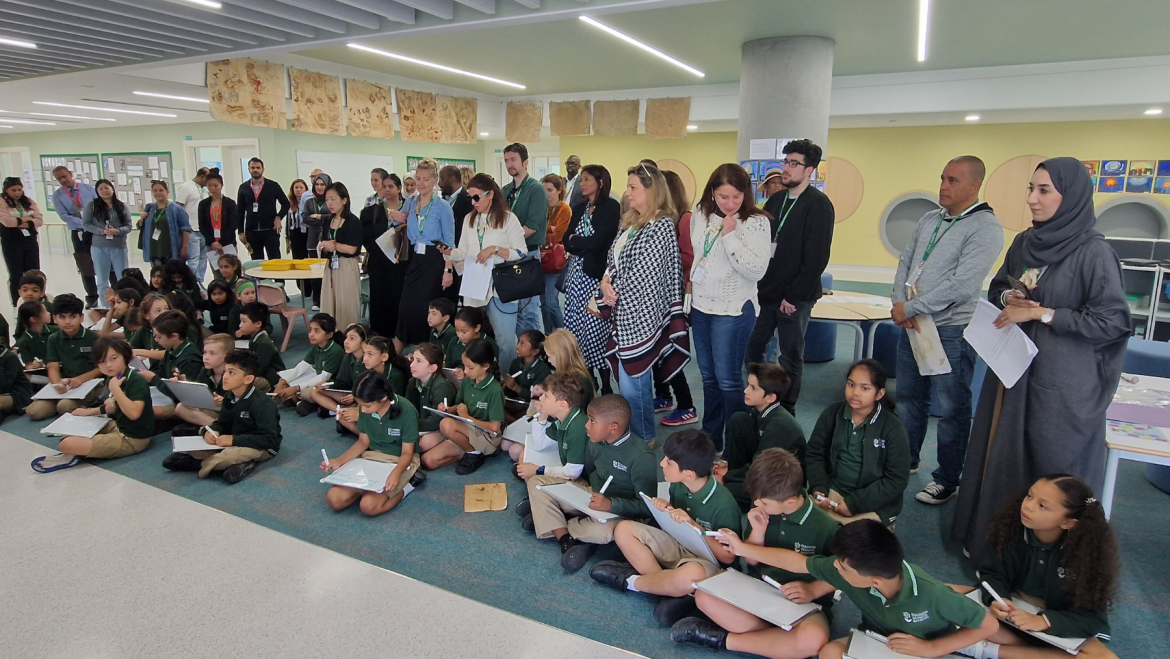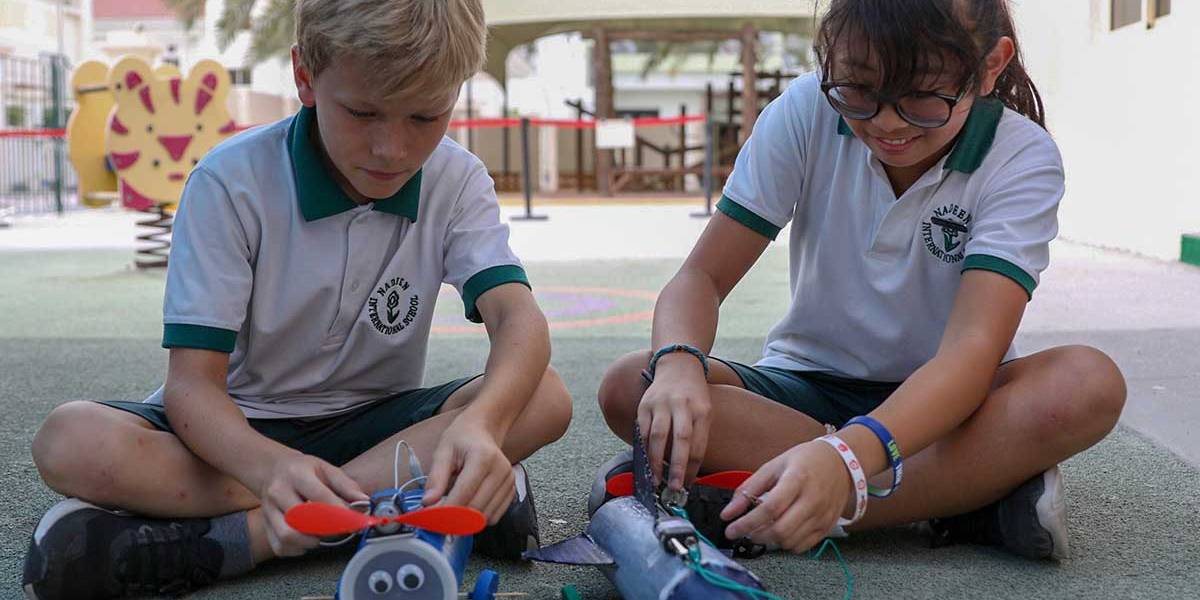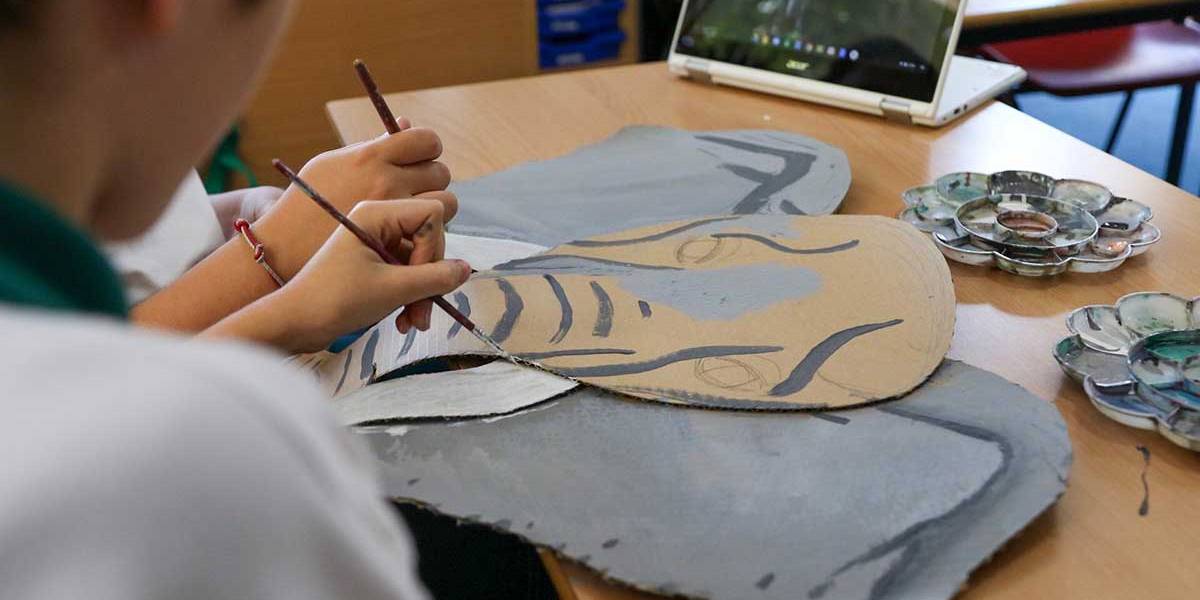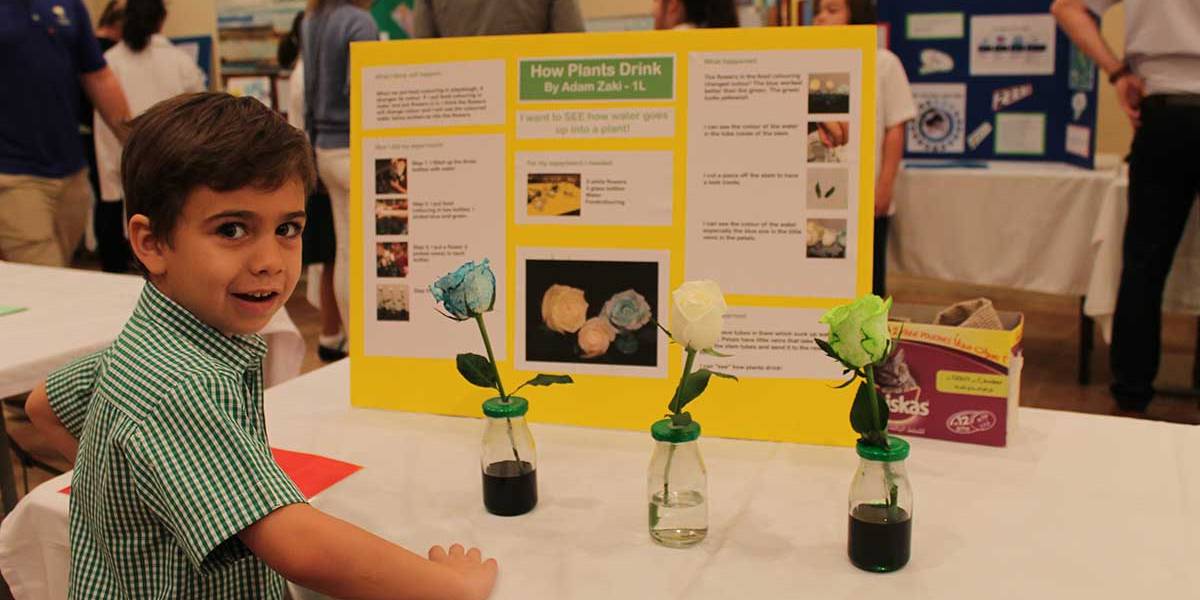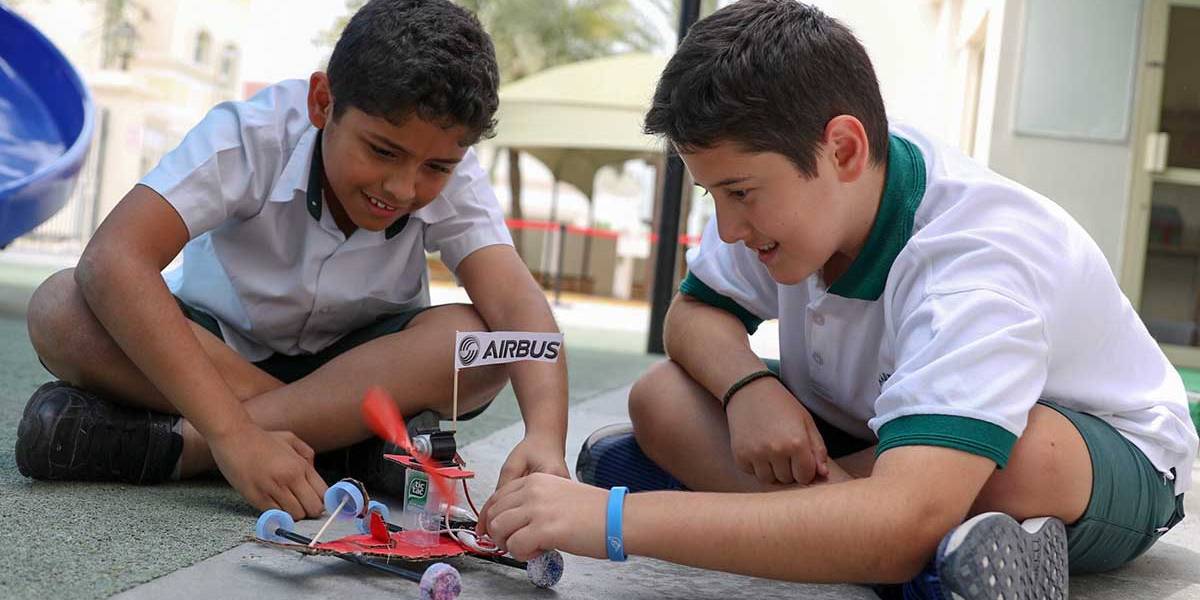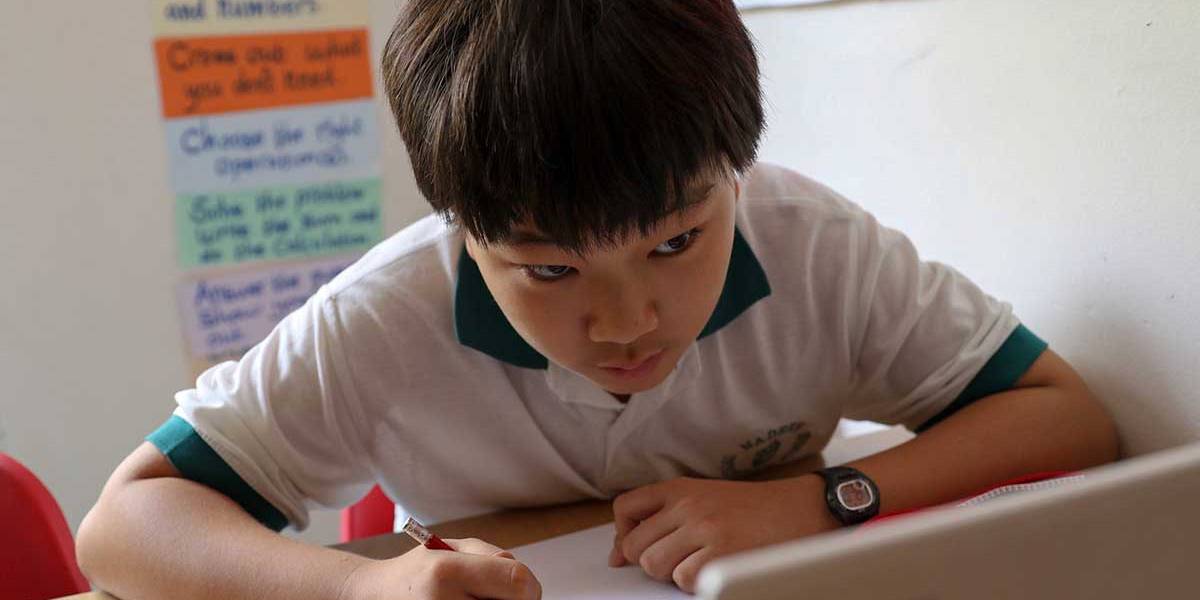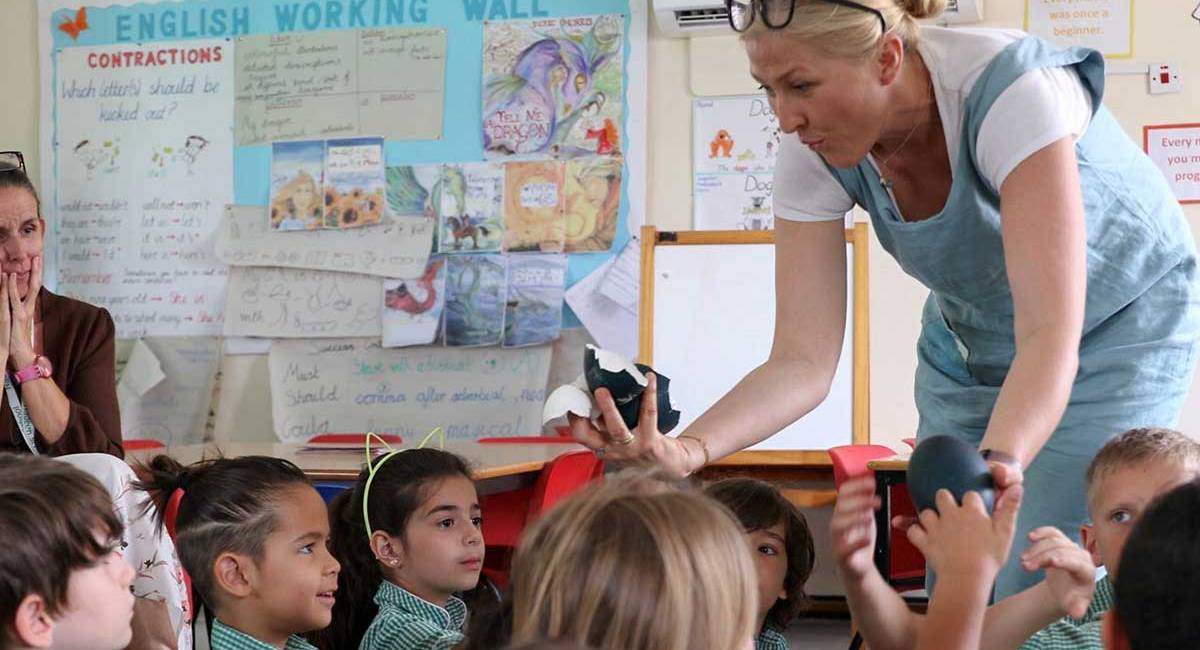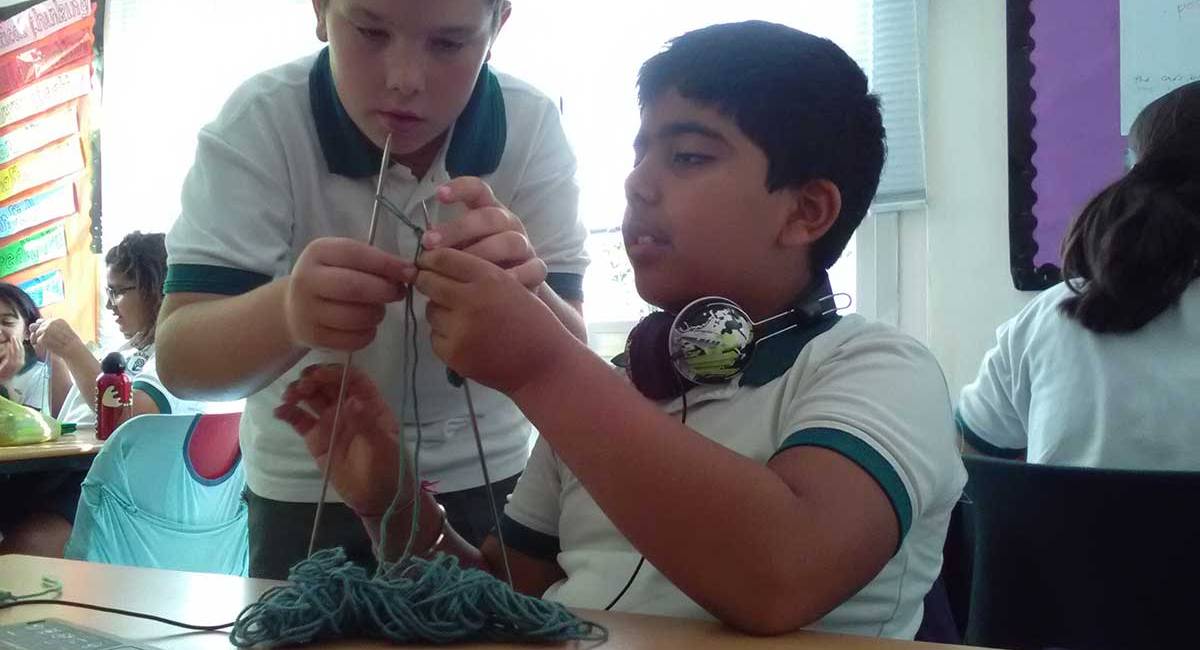Case Study: The Benefits of Shared Learning Spaces at Nadeen by Mr Phil Brennan
The setup of our classroom spaces has a big impact on student learning. If the physical space of the classroom can be arranged as an active learning space, if it has movable chairs and tables, and students sit facing each other, this can promote interactive, collaborative, and experiential learning (Harvey, & Kenyon, 2013). At Nadeen School, we have always strived to break down traditional classroom walls and create effective learning environments to support student autonomy.
The Transformative Benefits of Shared Spaces:
At Nadeen, we utilise space both inside and outside the classroom to promote learning. At our new state-of-the-art campus in Dilmunia, the purpose-built and bespoke design has elevated the opportunities and experiences for learning. The Dilmunia campus design is underpinned by the concept known as Universal Design for Learning (UDL). UDL as it is also known, is established on principles that focus on designing physical spaces to create inclusive and effective learning environments. Research between educational pedagogists, architects, and educators, showcases that Shared Learning Spaces facilitate a constructivist approach to learning, support diverse learners, and foster student-led education. Studies show that students in active-learning spaces outperformed those in traditional-style classrooms when the same course was taught in both settings (Hodges, 2018).
“It is great using the Shared Spaces. We can choose to sit and focus anywhere. We have flexible seating. We can sit in the learning pods, use the outdoor balconies or even study in the wall seats. We use technology and our Chromebooks to work collaboratively on projects in the Shared Space. We take responsibility for our learning and work collaboratively.“
– by Zara, Year 4 .4 Student

Fostering Student-Led Approach to Learning:
At Nadeen, the integration of large open and flexible shared spaces has elevated the teaching and learning experience for all. These spaces transform the learning environment for our students. They help expand learning opportunities beyond the traditional classroom setting. The Shared Spaces promote collaboration, creativity, and active engagement among students. These flexible environments support constructivist learning by providing opportunities for hands-on exploration, collaborative problem-solving, and inquiry-based activities.
“Shared Spaces help students to take responsibility for their learning. We have created projects and worked in groups to complete different IPC projects. We also use it as a zone to peer-teach topics to our classmates. It is exciting to use the Shared Space and gives all students the chance to speak during group work tasks. We can work together and build confidence.“
– By Nasser Junaid, Year 6.3 Student
Celebration of Learning:
These flexible learning environments empower students to take ownership of their learning and pursue areas of interest. The shared spaces seamlessly integrate the learning opportunities presented in the International Primary Curriculum (IPC). This year, we have seen incredible Entry Point and Exit Point exhibitions on display in these zones. Parents and students have had the opportunity to experience the benefits of these learning spaces and the positive opportunities they foster. The spaces offer opportunities for students to collaborate with peers on IPC projects of their choice. This student-led approach cultivates intrinsic motivation, self-efficacy, and a sense of agency among learners.
“I really enjoy doing project tasks in the Shared Space. It allows us to be creative and free. We have used our shared space to host Exit Points in IPC. It’s really fun presenting to our parents! It gives us lots of space to show our projects and complete fun activities outside the classroom.“
– By Bethany, Year 4.4 Student

We hope that you enjoy the experiences that our new campus has presented. The school design demonstrates the profound impact of our Shared Spaces have in transforming traditional learning spaces into inclusive, dynamic, and student-centred environments. By embracing and maximising the Shared Spaces for teaching and learning, we strive to create learning zones that promote self-efficacy, task engagement, and academic success for all students!





Bibliography
Harvey, E. J. & Kenyon, M. C. (2013). Classroom seating configurations for 21st century students and faculty. Journal of Learning Spaces, 2(1).
Hodges, L. C. (2018). Contemporary Issues in Group Learning in Undergraduate Science Classrooms: A Perspective from Student Engagement. CBE—Life Sciences Education, 17(2), es3.
Waite, S. (2016) Children Learning Outside the Classroom: from birth to eleven, London, SAGE, Part 1 Thinking across the whole: Chapter 1 – Theoretical Perspectives on Learning Outside the Classroom, pp.7-22
https://www.cast.org/impact/universal-design-for-learning-udl
https://www.frontiersin.org/articles/10.3389/feduc.2022.965818/full
https://www.sciencedirect.com/science/article/pii/S2405844023026634#bib6
https://link.springer.com/article/10.1007/s10984-020-09345-8

